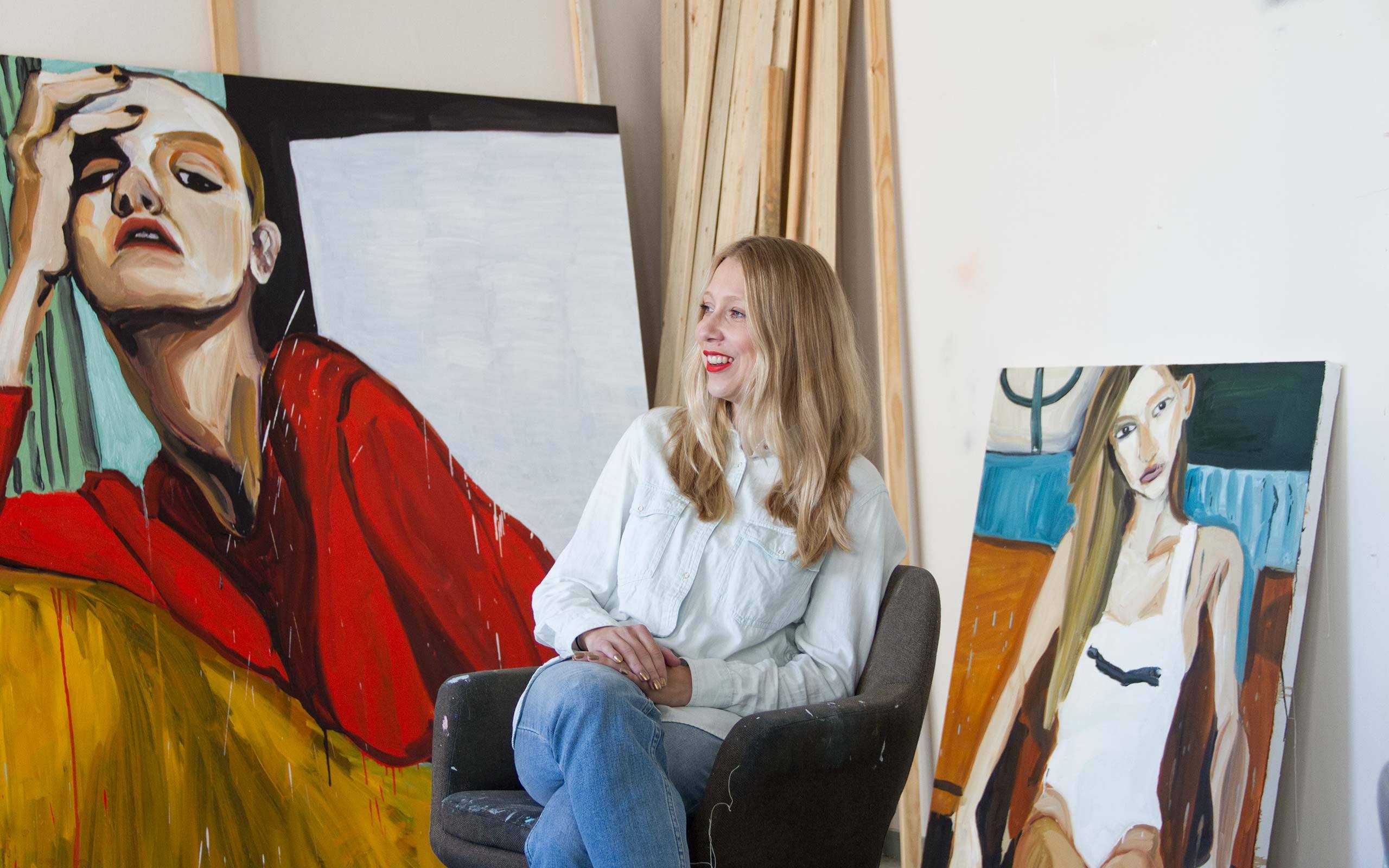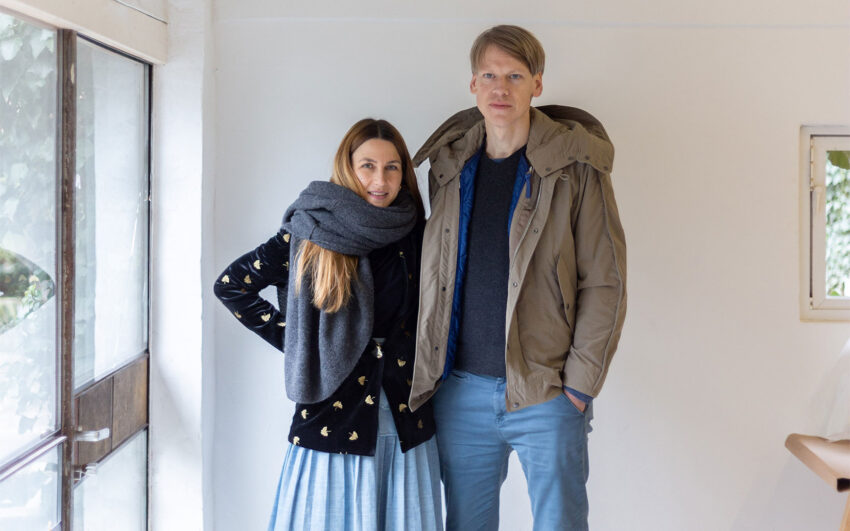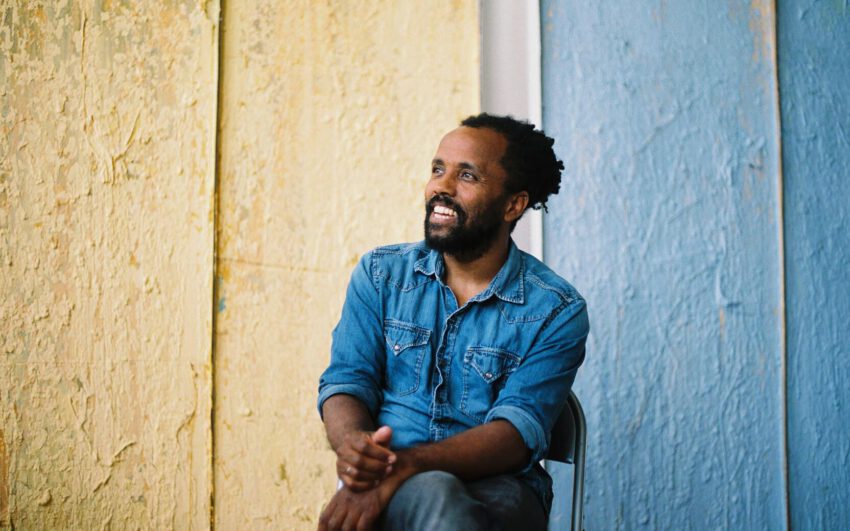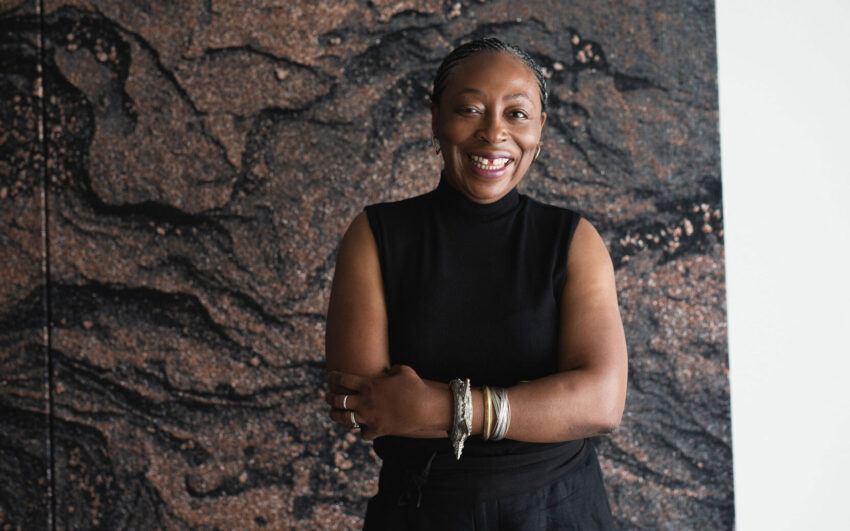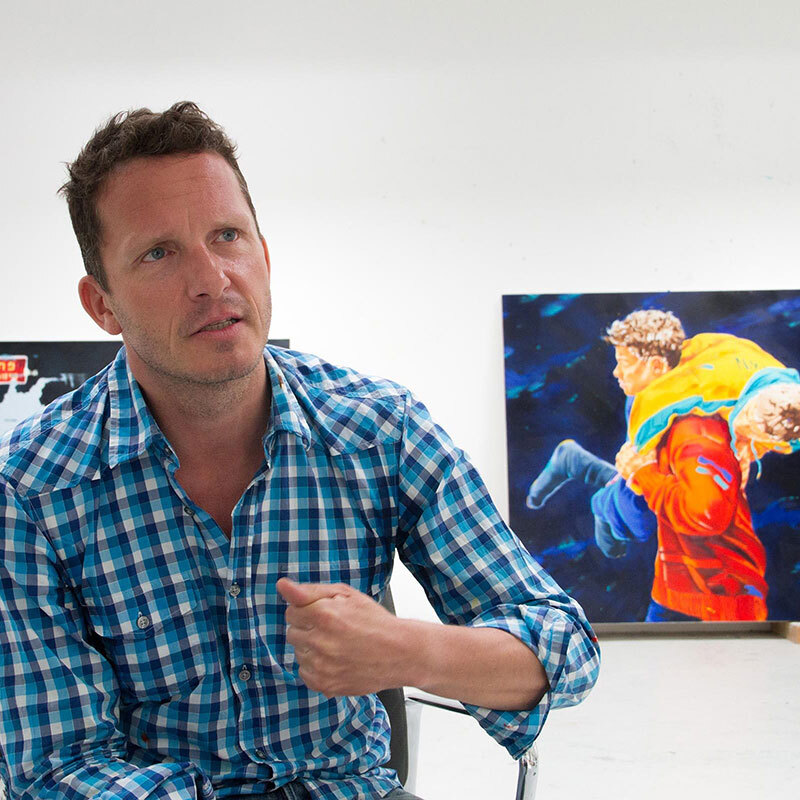The scene for contemporary art in Europe’s North is expanding and developing new dynamics as international collectors are watching the scene. With Nordic Notes we regularly cast the eye on the Nordic art and cultural scene, portraying its important actors.
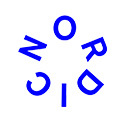
Jenni Hiltunen deals with phenomena of our time: a pleasure oriented and individualistic worldview and the understanding of reality through images. A “posing culture”, fostered by social media and the internet, and its pretentious way of existing in the world of entertainment is one of the topics she explores to hold a mirror in front of us. She exaggerates without over-moralizing. We met Jenni in her studio in Kallio, formerly Helsinki’s working-class district, and talked with her about her admiration of Marlene Dumas, why Berlin has become a suburb of Helsinki, and how far art may go in putting society to the test.
Jenni, it’s the end of the summer. Everyone seems to be back from their summer cottages. And Helsinki seems to be in good spirits.
Yes, it’s that time of year where everyone is talking about just one thing: The Flow Festival. It is one of the most popular festivals in the whole of Scandinavia and we Finns, particularly we from Helsinki, love Flow and can get really excited about it. It lasts for three days and is kind of our big end-of-summer carnival, before everyone gets back to work. You have to know that Flow is quite different from the usual festival. It feels more like a community in the middle of Helsinki. There are several stages with music, art shows by young artists from the University of the Arts Helsinki, and lots of workshops and discussions taking place. One of my works have been shown at Flow before.
We visited the Kiasma, Helsinki’s contemporary art museum, the other day and we discovered a video work from you, called “Grind”. Until then, we had considered you a painter and we nearly overlooked it was from you.
Oh yes, I don’t consider myself only as a painter, although you are right, a lot of my works are large canvas paintings in acryl and in the meantime oil, but I don’t limit myself in the choice of media. So far I have focused on videos and paintings, apart from one work, which is large fabric installation, which was also shown at the Kiasma. As I said, the medium may vary, but what holds my works together is that they deal with similar topics. But I have to say that at the moment I get most excited to do paintings. I somehow feel more alive when I paint and the ability of paintings to confront me with questions always holds a fascination for me. I think that I will always use different media but, independent of this, I will always keep on painting. But right now I am also thinking of doing a new video work – maybe this year or the year after.
In all your works people play quite a prominent role. Most of them are looking straight into the eyes of the viewer. It’s almost like they are presenting themselves.
Yes, that’s quite a precise observation. I want to enquire into the phenomena of our contemporary lives. For example a real tendency has emerged that people present themselves through various media channels, which are now available to them. This “posing culture” as I call it has become quite obvious and very present in the day-to-day. I am interested in the aesthetics of music videos, fashion and especially social media.
So you are interested in posing culture and what’s happening in social media. What do you consider your role as an artist? Are you simply creating a contemporary documentation, or are you criticizing phenomena like this posing culture in a more political sense?
Well, yes, that's a good question. I think my role in it is not really of importance. I just want to show different kinds of phenomena I observe and interpret them in a carnivalesque sense. I hope to put a mirror in front of people to make them aware and realize phenomena of which they are a part. It has become a convention that people present their six-pack, their butt or even just the perfectly studied facial expression. It has become so normal that nobody questions it anymore. So I want to wake up people. But don’t understand me wrong. I am not trying to be patronizing. You can always discover a twinkle of the eye in my work.
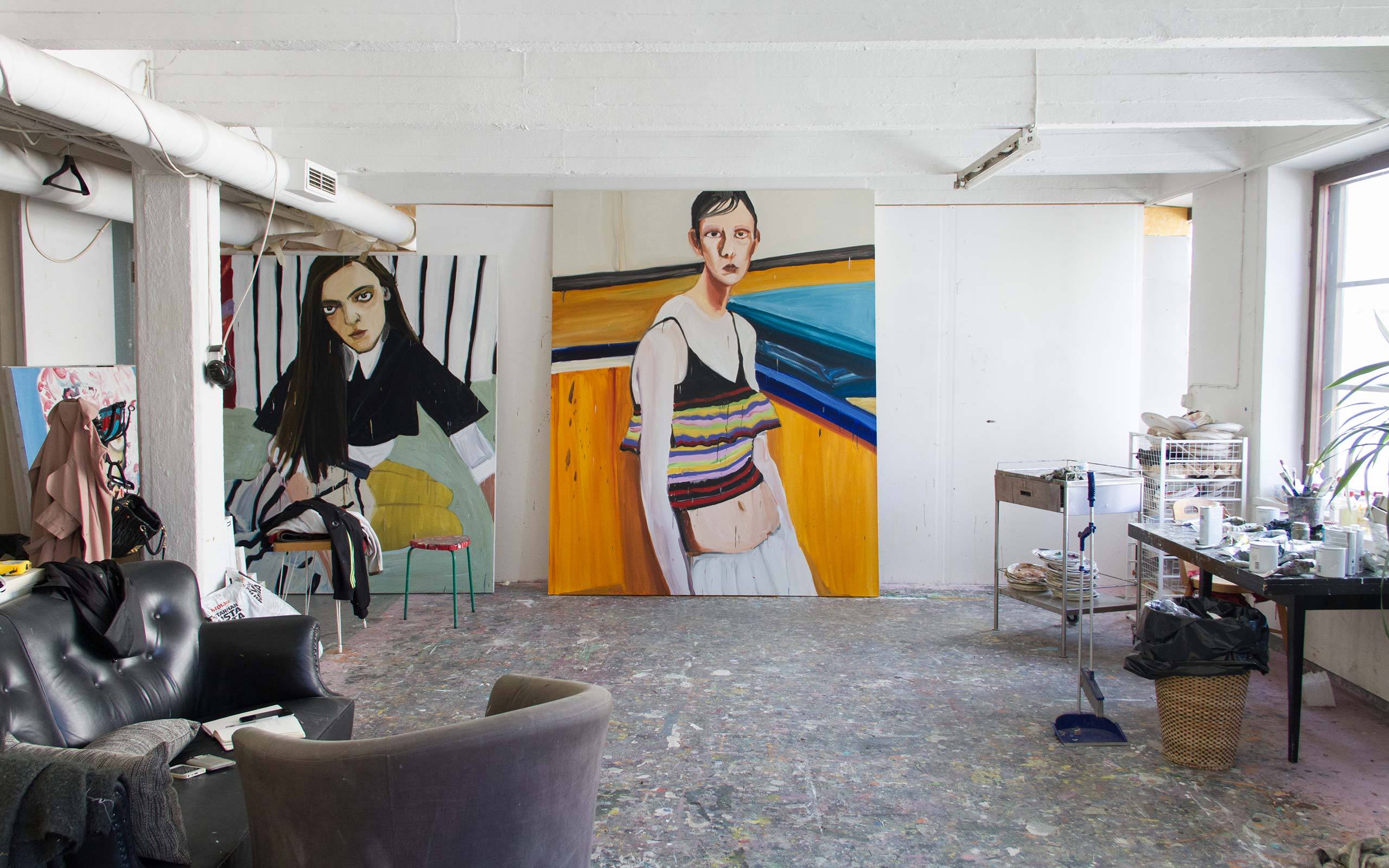
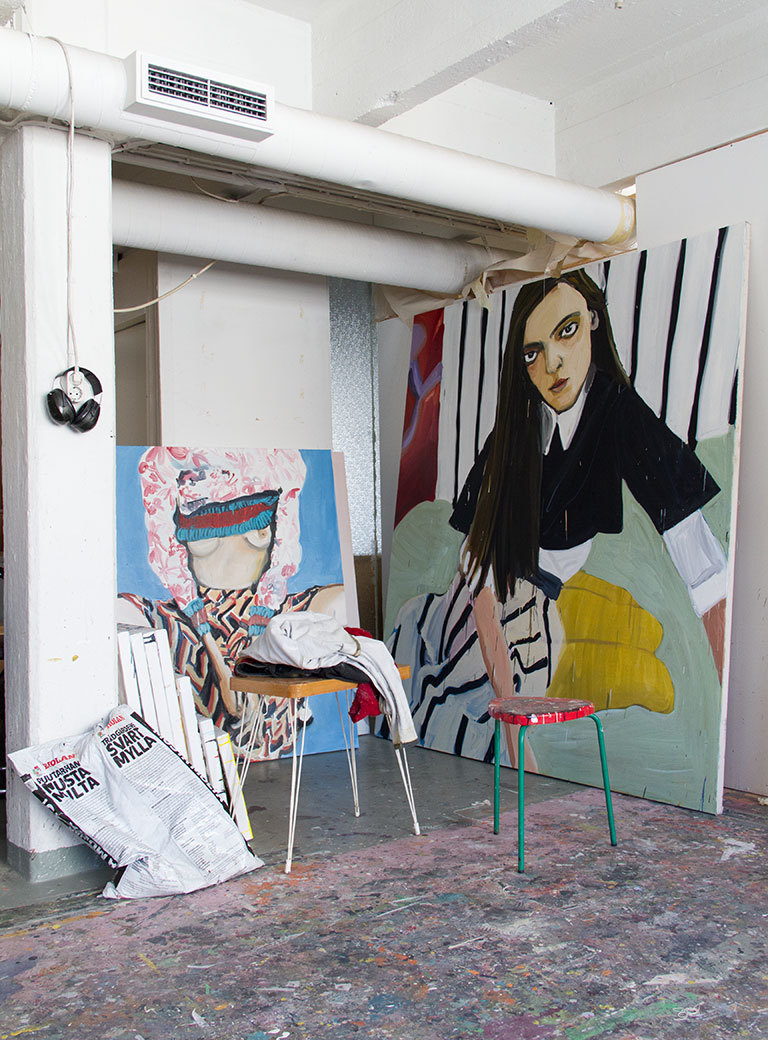
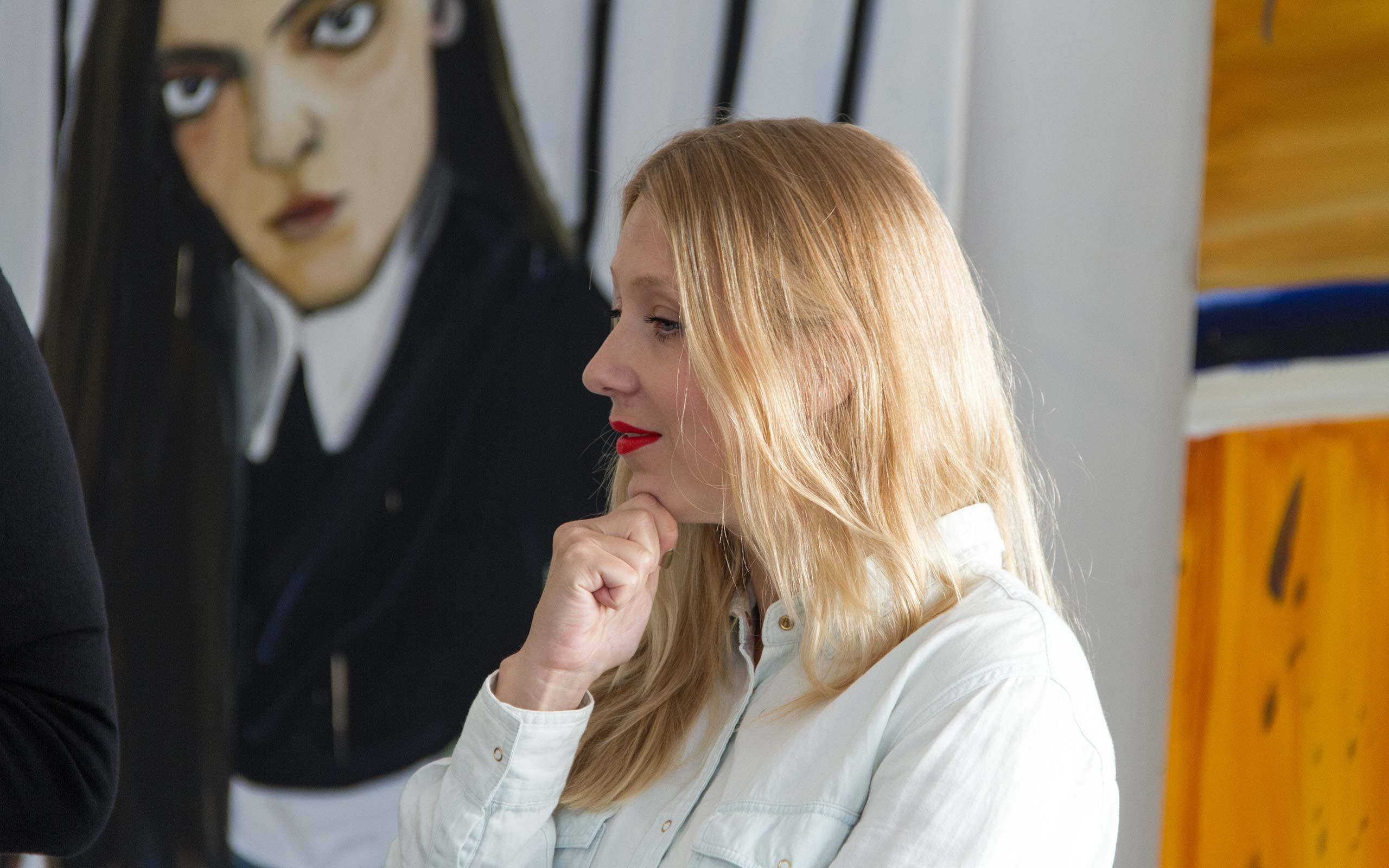
“Grind” is a very remarkable video work of yours, which has been exhibited at the Kiasma among others. The video depicts a Jamaican dancehall queen dancing quite provocatively. The video is played in slow motion. One of the dresses used in the video resembles a traditional Sámi people’s costume, which gave rise to quite some debate. What was your intention?
Grind is from 2012 and is the latest video I have done. It is all about flesh and dance and moves. Twerking or booty shaking is very common dance in the world of music videos. And the music, bodies and dance are things, which inspire me. My priority with Grind was to make aware how globalism and the world of entertainment are converging, as well as the phenomenon than everyone can adopt an image to pursue his or her own interests of staging oneself, which could even reach as far as someone taking ownership of someone else’s culture, which one doesn’t even understand. It’s like a tourist to Bavaria putting on Lederhosen or a Western woman putting on a traditional sari to mingle with the locals. So the Sámi dress was a metaphor. I did not expect that wave of indignation about it. I feel the work had been criticized in a very narrow-minded sense and therefore misinterpreted. But in a way the indignation was exactly about what I was trying to point out: that adopting some else’s identity in a thoughtless act can be disrespectful and insulting. But because it is a work of art, there isn’t just one meaning!
Did you feel you may have crossed a line with “Grind”? Is there a limit how far art may go?
I don’t think so. I think it is exactly what art should be about. Not necessarily to provoke to that extent in every case. But I think it's important to show people things that became so common that they don't perceive them anymore – by putting a spotlight on them and presenting them in a different context. In this sense, art can be a catalyst for change, at least it can contribute to change. To do this it needs an uncompromising artistic freedom. A society should be strong enough to bear this.
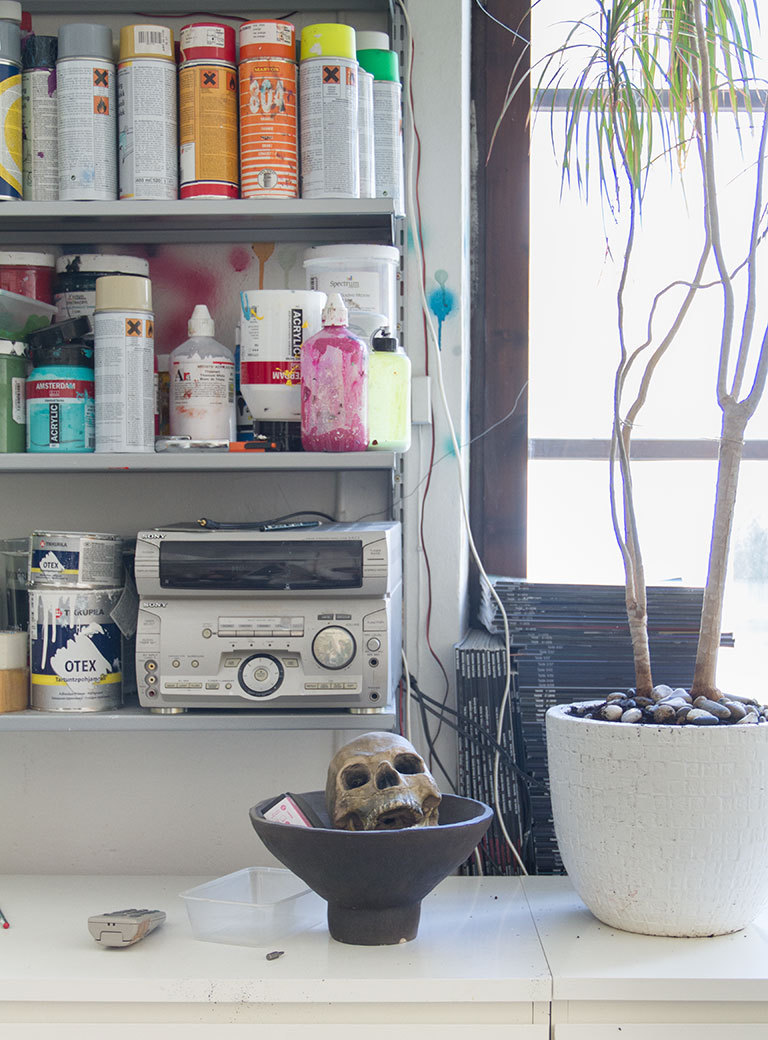
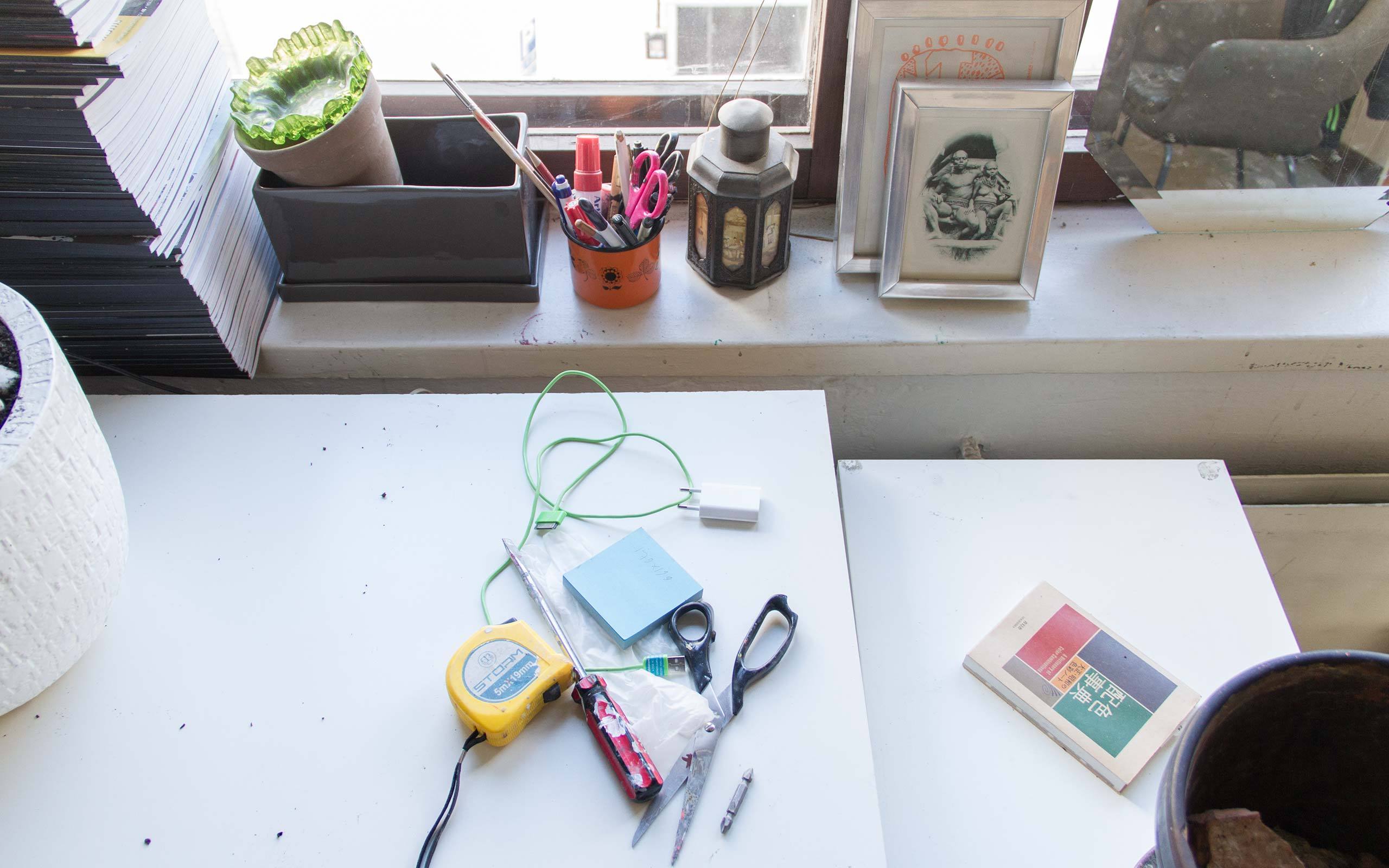
Let’s talk about your beginnings as an artist. How did it come to the decision to study art?
I never really thought about any other options. I had been in a school with a very artistic focus, which I think influenced me a lot in my decision to take the next level and go to art academy. At some point, I thought I might get into studies of design, and I was really interested in fashion, but art has always been what I get excited about most. It felt natural. As an artist you are free to do whatever you want. It is a way of living. And I think it was this what attracted me most about an artistic path.
That’s one side of the coin, right? Becoming an artist comes with a lot of risk.
Yes, it is not a safe job in the conventional sense. You cannot even plan ahead your life for the next 5 years as you don’t know where your career is going. But I don’t want to change anything! I am a really happy person the way I work and live.
So you would even support your little daughter if she wanted to become an artist?
Yes, for sure!
How does it feel to be an artist in Finland these days?
Of course, the art circle in Finland is very small so it can be a bit boring sometimes. That’s the reason why a lot of Finnish artists are getting away for a while to return again. I had artist residencies in Paris and Berlin, and it was a wonderful and really inspiring time. I was able to take a lot of impressions as material from my which entered my work, once I was back in the studio in Helsinki.
Have you ever had the idea moving abroad for a longer period of time?
Yes, before I got the child we were thinking about moving to Berlin because we have spend a lot of time there. But it's so easy to go there and easy to come back that we don’t have to move there permanently. People say that Berlin has become Helsinki’s backyard because there are so many Finnish people living there. (laughs) Despite the fact that the art scene here is less vibrant than for example Berlin, it is nice to work here because I know the places and my studio has become my second home. I mentioned that I also have a child. And all my family is here. So I am really happy to be living and working in Helsinki.
Finland may not be the first country if one thinks about art production. Why do you think we hear so little abroad about Finnish artists?
That’s a good question. Because, personally, I see art, architecture and design as intertwined. They are one! I think that’s also how people like Alvar Aalto saw it. So maybe we never looked at art separately to give it its own stage, which would have made it easier for others to recognize Finland for its resourcefulness in the arts. But I think that this is going to change…
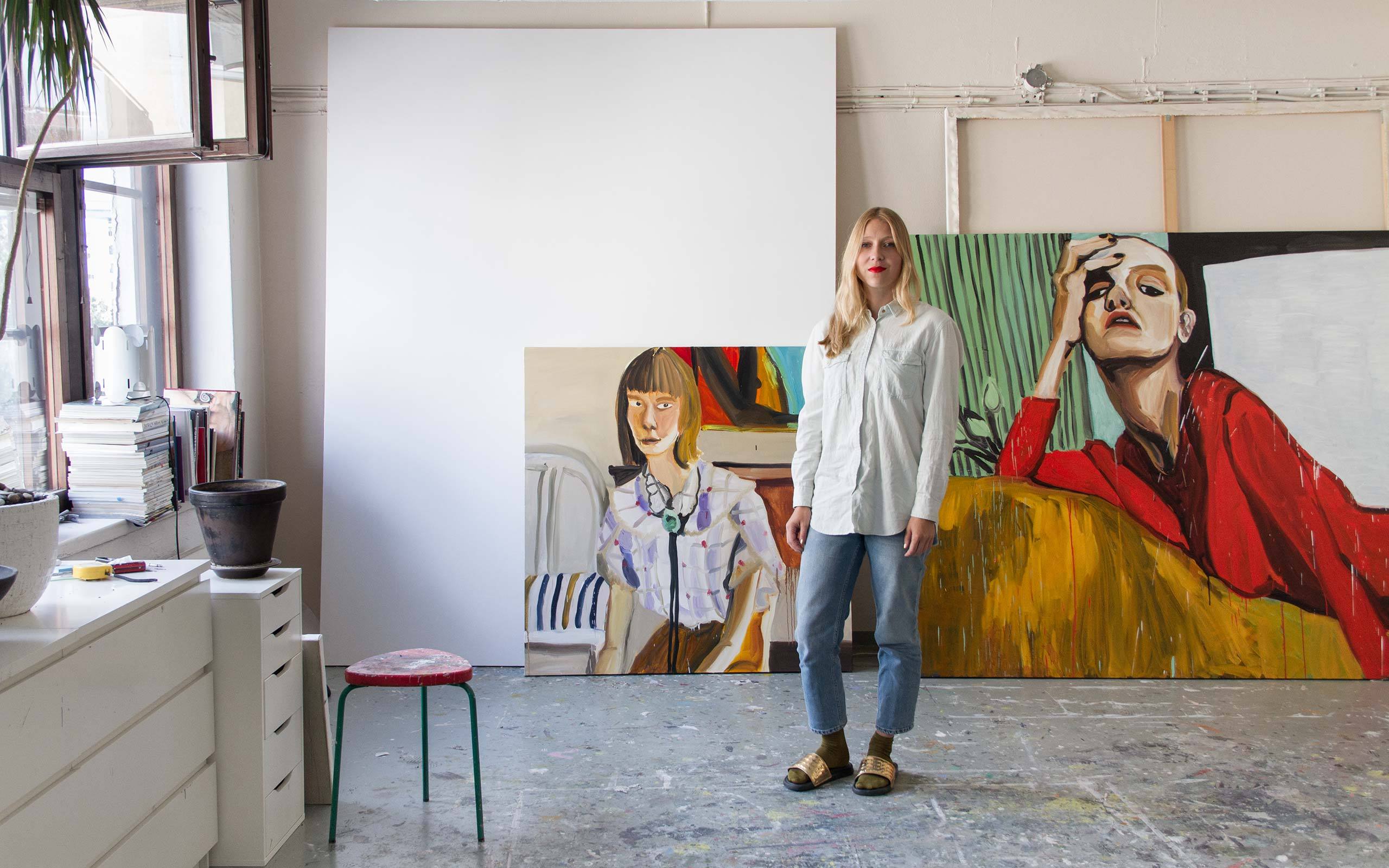
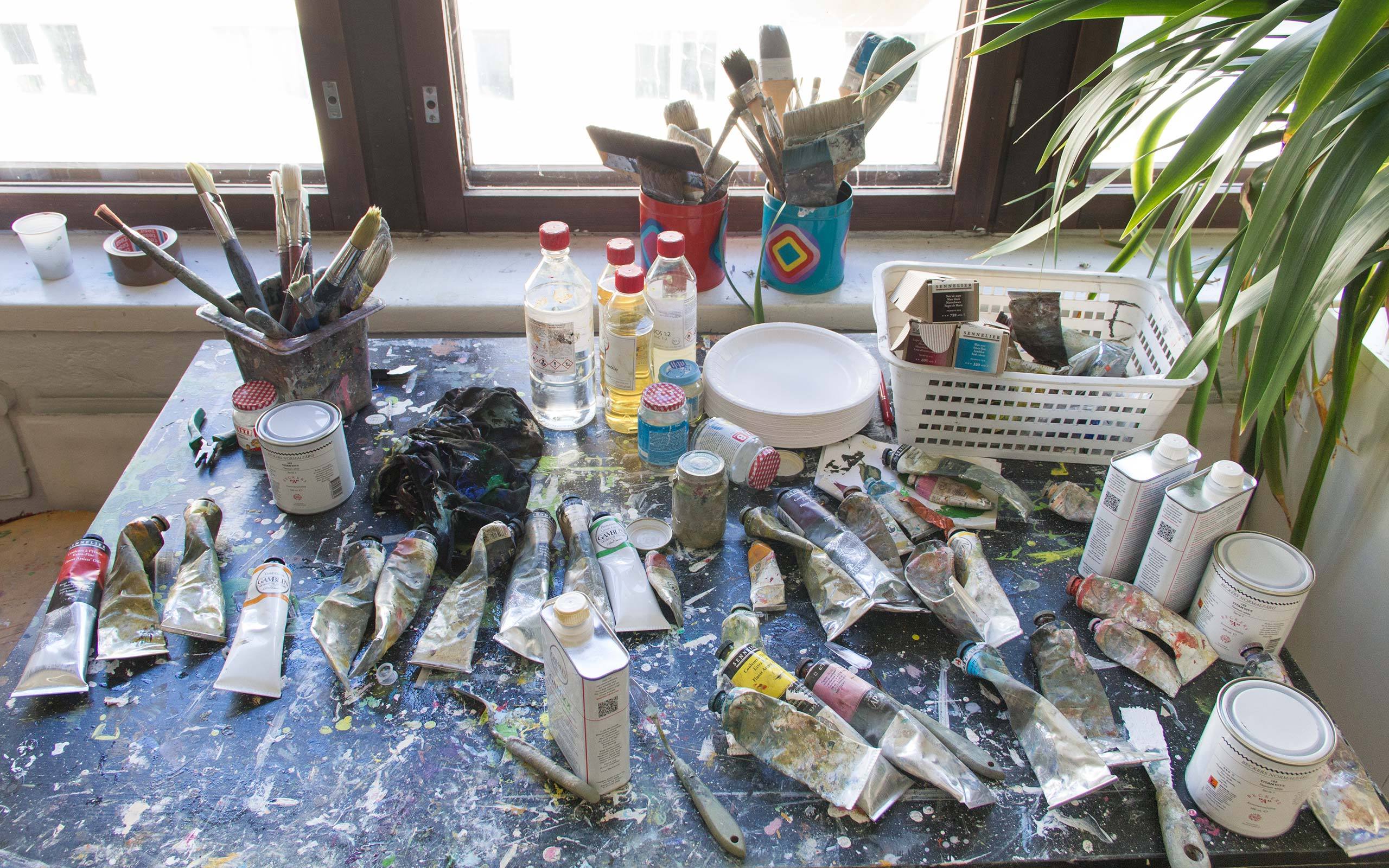
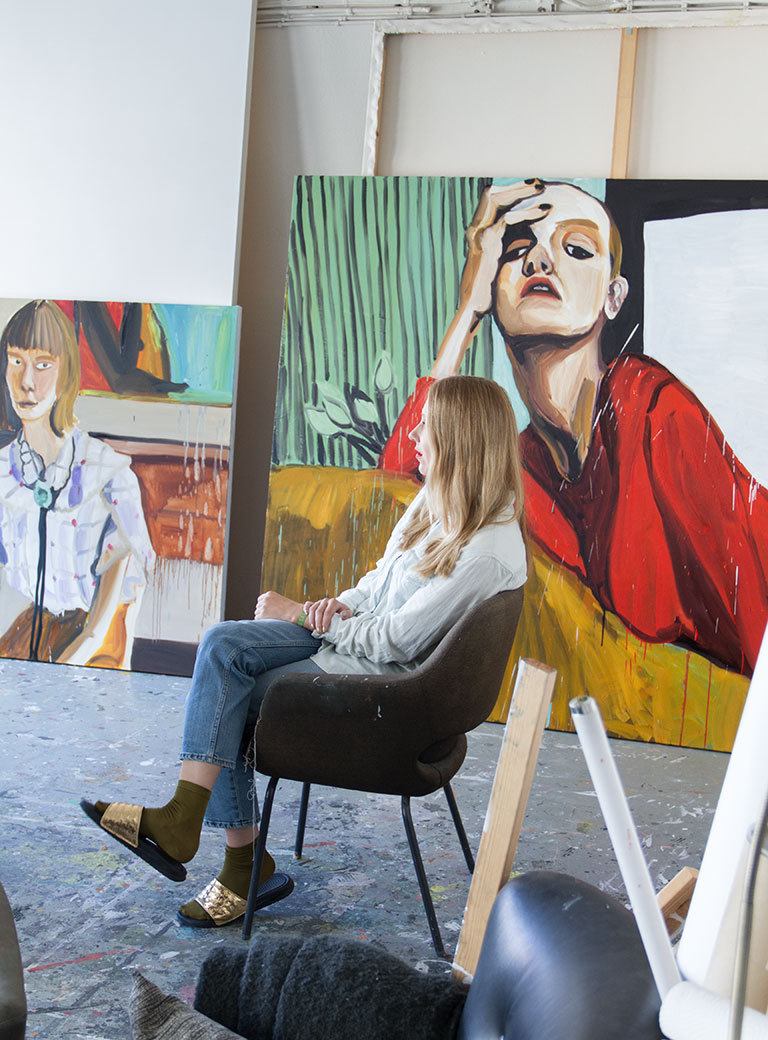
Let’s talk a bit more about your work. You said you are seeking your inspiration by what you observe in the daily life and particular from social media. Some of your paintings look like you had a real person modeling for you. Others could also be taken straight from Facebook or Instagram.
A lot of my motifs are borrowed from the fashion world, but indeed I also have people posing as models for me. They are often friends of mine. As you see nearly all of them are women. It just happened. Maybe I am starting to paint some men as well from now on. I was thinking a lot this summer about what to do and where to go next. It is not fixed yet, but I think I will change things a bit. For example, until now, I have been using acrylic, but I have loved to paint in oil recently. It will change my way of working. Usually I did one painting a day when I had a good drive going on. Now, with oil color, it takes much more time for drying, so I have to do one painting on one day and another painting on another day, only to return to the first one after that and so on.
Some of your paintings vaguely are reminiscent of Marlene Dumas’ paintings? Are you an admirer of her work?
Yes. I love Marlene Dumas paintings! Also Alice Neel and Henri Matisse are my all-time favorites. And of course many contemporary painters have had an influence on me. Having said that, I am continuously seeking to employ new styles in my work, new ways to paint, and I investigate different techniques. Looking at my work, what characterizes it is that it is very alive and vibrant, with a strong use of color. I am very impatient painter, I want to capture the magical moment very fast and my handprint is quite fierce.
Do you have any heroes or people you admire?
I have so many interesting people around me! Many of my friends have chosen precarious lifestyles as artists, designer or freelancers. I am inspired by people who are open to the world, who don’t mind what other people think and who are not looking enviously towards other’s achievements and are mischievous about it. Right now I am very inspired by my daughter Maire. She is one year and eight months old. Her energy level is crazy! We dance many hours per day and her moves are stunning.
What are you working on at the moment?
I am preparing a huge exhibition at Galerie Forsblom here in Helsinki, which will open in February 2017. After that I will do an exhibition at my other gallery in Milan, which will take place in September 2017. I've been on maternity leave during 2015 so a lot of work is waiting for me in the studio.
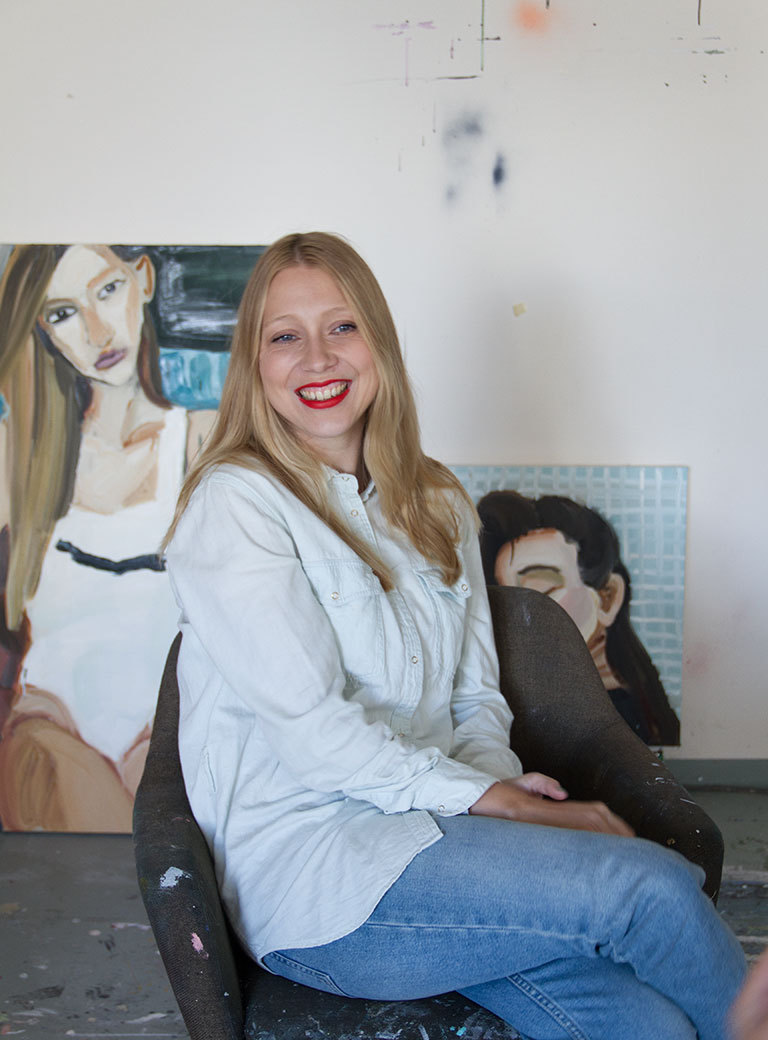
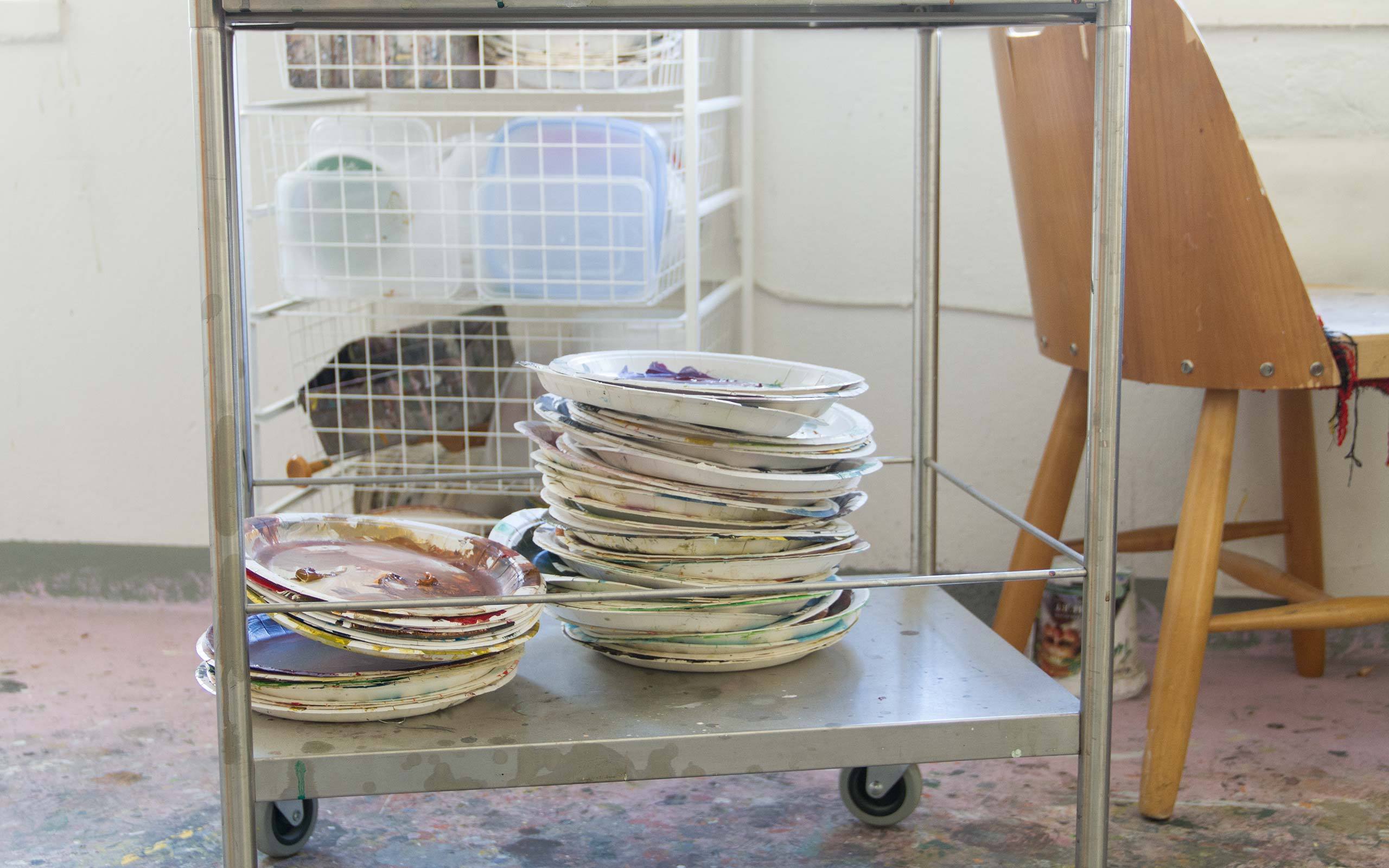
Interview: Michael Wuerges
Photos: Florian Langhammer
Grind (2012), Jenni Hiltunen
Dancehall Queen Style is a Jamaican dance fashion which became popular in the 1990s through music videos and The Grind show on MTV. The video is a playful take on the dancehall culture with its provocative costumes, suggestive poses, roles and blatant sexuality.


